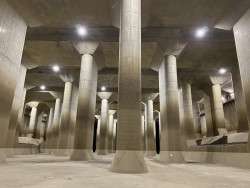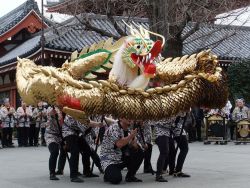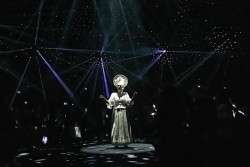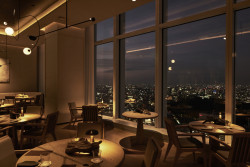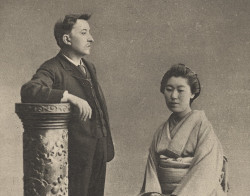
Originally published on metropolis.co.jp on October 2011

Lilly Fields is a certified paranormal investigator, and founder of Haunted Tokyo Tours, the city’s only ghost tour operator. All of her tours are original and based on historical record and traditional legend. Since she was a child, Fields has been interested in the macabre. A Japanese psychic once swore that she is the reincarnation of an ancient miko (shamaness). She was kind enough to pick her top ten Tokyo haunted spots for Metropolis.
1 Masakado’s grave
Located in Tokyo’s financial district, this is the final resting ground for an angry samurai rebel of the Heian period named Taira no Masakado. His decapitated head mysteriously resisted decay for three months, eyes continuing to roll, and eventually propelled itself from Kyoto to Edo. Construction workers who disturb the grave risk accident or death, and nearby office workers avoid sitting with their back to it. Lately the grave has become a “power spot” for those who want to harness some of the samurai’s fighting spirit.
2 Oiwa Shrine
Properly known as Oiwa Tamiya Jinja, this shrine was the former home of a woman poisoned by her husband who came back as a ghost to haunt him. With her disheveled hair and one drooping eye, Oiwa became the prototype for other fearsome female phantoms. Yotsuya Kaidan, Japan’s most famous ghost story, was made into a Kabuki play in 1825 and then dozens of cinema versions. The tradition continues for the staff and cast of such productions to pay their respects at the shrine first, or risk suffering the wrath of Oiwa.
3 Tokyo Tower
With one foot planted squarely in a graveyard, and painted the same vermillion color as a Shinto torii gate, this landmark 1958 steel structure is home to a frequently-sighted little girl ghost, and also houses a creepy wax museum with a likeness of Hisakichi Maeda, the tower’s deceased founder.
4 Suzugamori Execution Ground
Located along the old Tokaido Road, this principal Edo-period execution ground saw some 150,000 people killed here between 1651 and 1871. A burning pyre and stone platform to erect crucifixions attest to a range of cruel capital punishments. The “bridge of tears” is located nearby, where relatives of the doomed are said to have lingered.
5 Aoyama Reien
Taxi drivers speak in hushed tones of the white-frocked girl who hails them only to disappear in a wet puddle in their back seat. Interred here are famous murders, suicides and tragic endings from the 19th century onwards. Hitotama “orbs” are also frequently spotted late at night.
6 Sendagaya Tunnel
Hastily built in 1964 to meet urbanization improvements for the Tokyo Olympics, the tunnel runs directly beneath a cemetery. Reports often involve a female ghost with long hair who hangs upside down from the ceiling and sometimes falls on cars with a thud. The nearby Victor Studio is also considered to be haunted, with unexplained voices and wails often showing up in recordings.
7 Ireido
Located in Yokoami-cho Park, where throngs of people took refuge during the Great Kanto Earthquake and perished during the conflagration that followed. The park also served as a makeshift crematory for 38,000 bodies. The Ireido (“Hall of Repose”), a cavernous Buddhist style memorial hall built in 1931, was eventually also used to placate the souls of WWII firebombing victims. Graphic photos on display and an exhibition area filled with melted objects are moving reminders.
8 Old Hag’s Pond
Ancient site of an inn run by an evil old woman who murdered countless guests by dropping a stone boulder on them as they slept. The Legend of Adachigahara was made into a kabuki play, and became one of Japan’s first horror films. Cries are heard over the stagnant pond at night.
9 Hakone Yama
Located in Toyama Park, the former site of the Army Medical College and Hospital, and flanked by several medical research facilities, one of which was rumored to train the notorious Unit 731. Cadavers from medical experiments were said to be secretly buried there, and human bones continue to be unearthed in the park. Especially fearsome at night, sounds of crying and voices are often reported.
10 Sengakuji
Burial ground of the loyal 47 Ronin who committed hara kiri in 1703 after completing a violent vendetta. A blood-stained stone and plum tree and a head-washing well can all be visited within the temple grounds. Ghosts of individual Ronin are sometimes photographed in the incense smoke that burns continuously over their graves.
